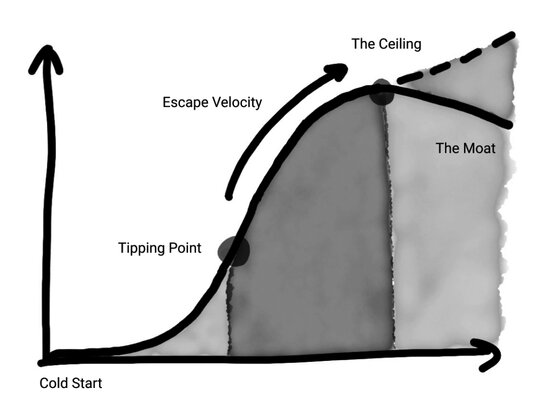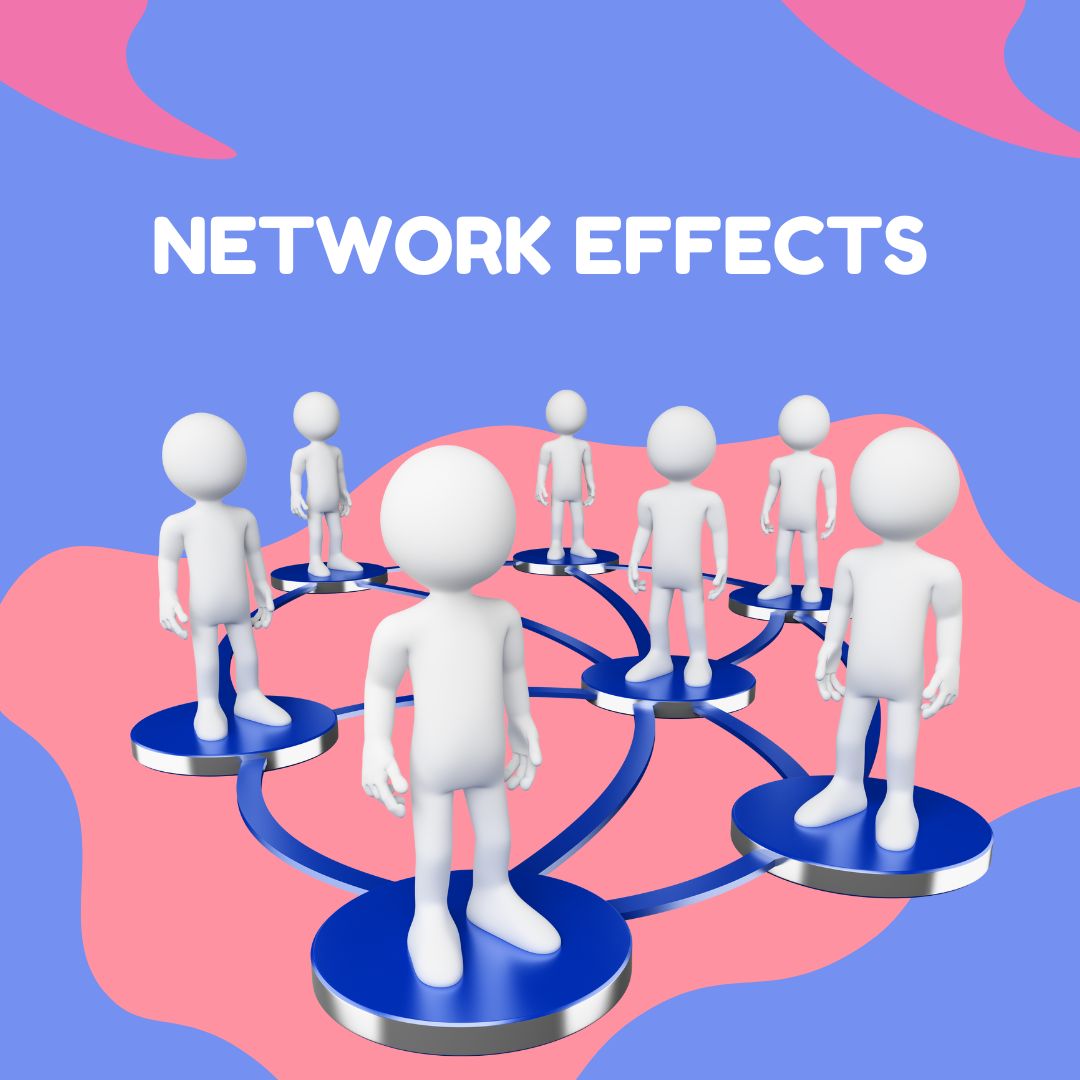The network Effect is a phenomenon that occurs when the value of a product to one user depends on how many other users there are. Technologies subject to strong network effects tend to exhibit long lead times followed by explosive growth. The pattern results from positive feedback: as the installed base of users grows, more and more users find adoption worthwhile. Eventually, the product achieves critical mass and takes over the market. 1
If the value to an individual depends on how many other members of his group use the product, there will be value to standardizing on a single product. Microsoft has exploited this desire for standardization with its Microsoft Office suite. 1
A network effect describes what happens when products get more valuable as more people use them. Network effects are embedded into many of the most ubiquitous and successful tech products around us, in different variations.
A network effect describes what happens when products get more valuable as more people use them. Network effects are embedded into many of the most ubiquitous and successful tech products around us, in different variations.
- Products like eBay, OpenTable, Uber, and Airbnb are examples of marketplace networks, comprising buyers and sellers.
- Dropbox, Slack, and Google Suite are workplace collaboration products built from the network of your teammates and coworkers. Instagram, Reddit, TikTok, YouTube, and Twitter are networks of content creators and consumers (and advertisers!).
- Developer ecosystems like Android and iOS make it possible for consumers to discover and pay for apps, and the developers that build them. 2
A network effect describes what happens when products get more valuable as more people use them.
Metcalfe’s law
Metcalfe’s law is attributed to one of the inventors of Ethernet and co-founder of the 3Com, Bob Metcalfe. He popularized the concept of Network Effects.
The law states that If there are n people in a network, and the value of the network to each of them is proportional to the number of other users, then the total value of the network (to all the users) is proportional to n × (n − 1) = n2 − n. If the value of a network to a single user is $1 for each other user on the network, then a network of size 10 has a total value of roughly $100. In contrast, a network of size 100 has a total value of roughly $10,000. A tenfold increase in the size of the network leads to a hundredfold increase in its value. 1
The Chicken and Egg Problem
The Chicken and Egg Problem is a situation that occurs when you have more supply than demand. In the context of a startup, you start a business, and you find it hard to get customers or end users to your platform, website or using your product.
Types of Network Effects 3
Direct Network Effects
Direct Network Externalities increase as the size of a network of users increases in which the users of the product can communicate with each other.
Examples: fax machines, email, telephones, and AIM program.
Indirect Network Effects
Indirect Network Externalities exist when as the number of consumers of a particular good cause firms to produce complementary goods that increases the value of the initial product.
Examples: Operating system software (such as Windows), ATM network, DVD players, palm pilots and electric vehicles.

In his book, The Cold Start Problem: How to Start and Scale Network Effects, former Uber executive and startup investor at Andreessen Horowitz (a16z) Andrew Chen provide a framework for using network effects to product launch and scale. Chen writes:
The Cold Start Theory
Cold Start Theory lays out a series of stages that every product team must traverse to fully harness the power of network effects. The curve represents the value of the network as it builds over time, and is shaped as an S-curve with a droop at the end.

Five Stages of the Cold Start Theory
It is made up of five stages for creating, scaling, and defending the network effect, and aims to provide a road map for any new product team—at a startup or larger company—to leverage in their work. There are five primary stages:
- The Cold Start Problem
- Tipping Point
- Escape Velocity
- Hitting the Ceiling
- The Moat
1. The Cold Start Problem
Most new networks fail. If a new video-sharing app launches and doesn’t have a wide selection of content early on, users won’t stick around. The same is true for marketplaces, social networks, and all the other variations of consumer (and even B2B) products—if users don’t find who or what they want, they’ll churn. This leads to a self-reinforcing destructive loop.
2. Tipping Point
To win a market, it’s important to build many, many more networks to expand into the market. As a network grows, each new network starts to tip faster and faster, so that the entire market is more easily captured.
3. Escape Velocity
The Escape Velocity stage is all about working furiously to strengthen network effects and to sustain growth.
The three underlying forces of escape velocity
- Acquisition Effect: Lets products tap into the network to drive low-cost, highly efficient user acquisition via viral growth;
- Engagement Effect: Increases interaction between users as networks fill in;
- Economic Effect: Improves monetization levels and conversion rates as the network grows.
4. Hitting the Ceiling
A rapidly growing network wants to both grow as well as tear itself apart, and there are enormous forces in both directions.
In the real world, products tend to grow rapidly, then hit a ceiling, then as the team addresses the problems, another growth spurt emerges. Then follows another ceiling. Then another cycle after that, each one often successively getting more complex to address over time as the problems become more fundamental.
5. The Moat
The final stage of the framework focuses on using network effects to fend off competitors, which is often the focus as the network and product matures.
The solution to the Cold Start Problem starts by understanding how to add a small group of the right people, at the same time, using the product in the right way. Getting this initial network off the ground is the key, and the key is the “atomic network”—the smallest, stable network from which all other networks can be built.
Most successful technology platforms leverage the power of network effects for scale. Examples of platforms with Network Effects include - Google, Facebook, Apple, Social Networks, Airbnb, WhatsApp etc.
Looking to build your successful tech Startup? Join our 12-week cohort of tech startups for Black founders by Black industry experts.
